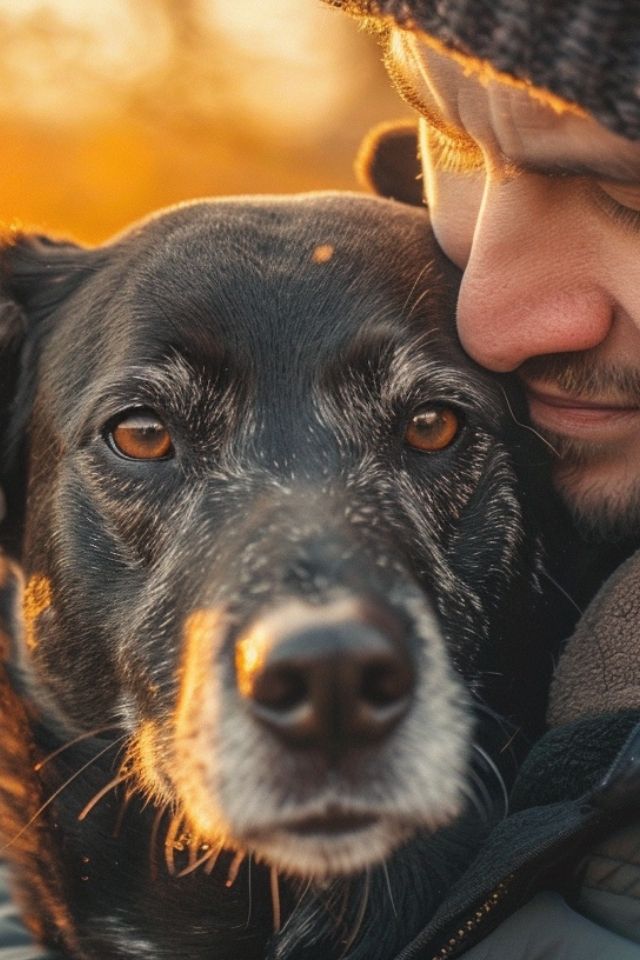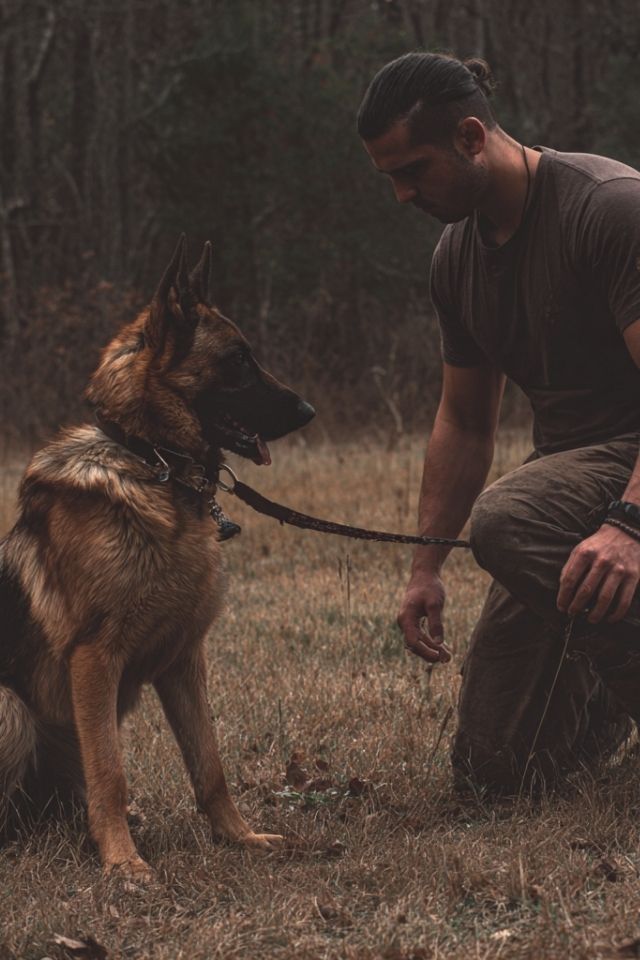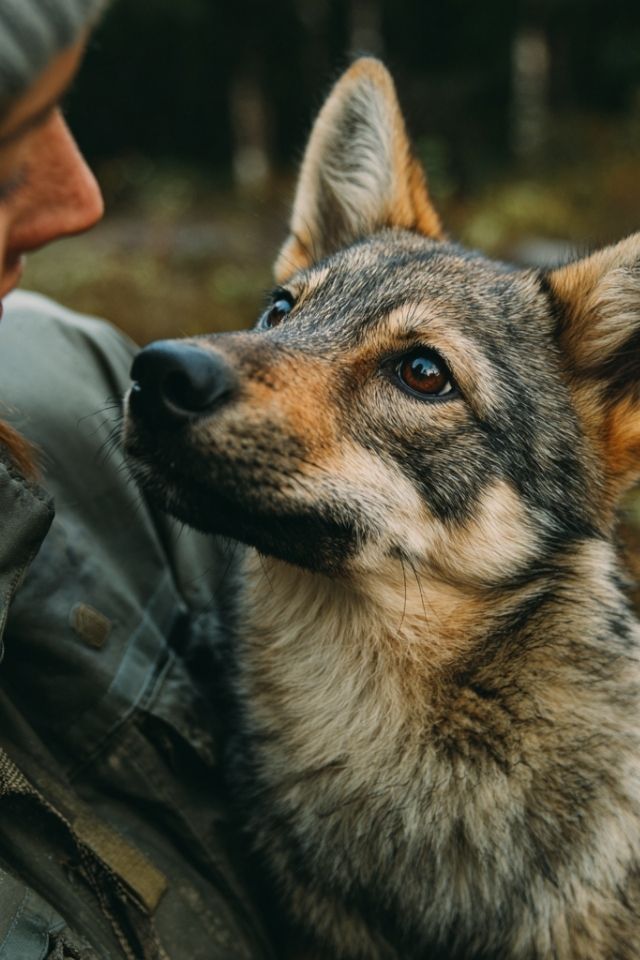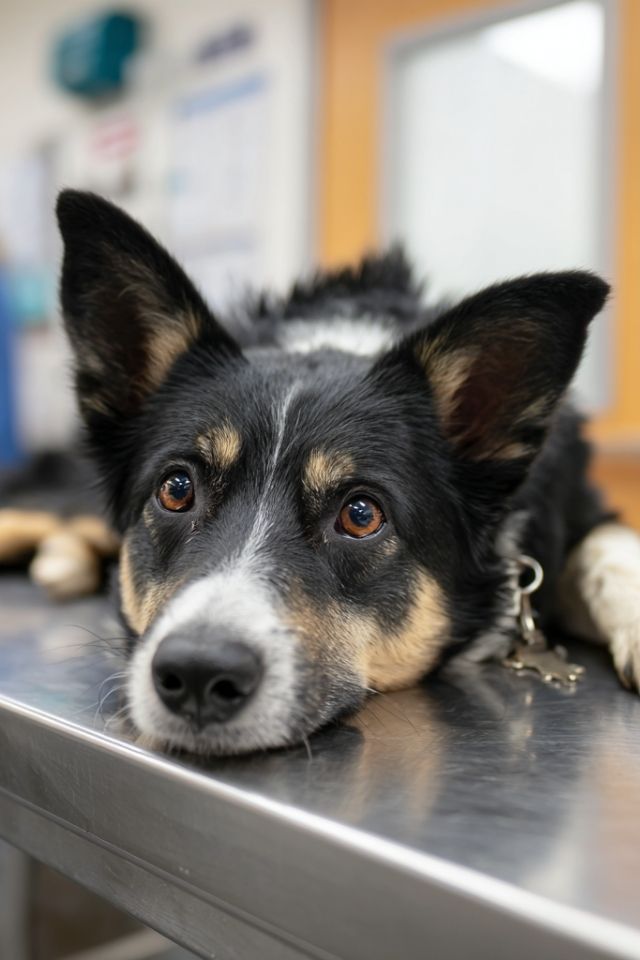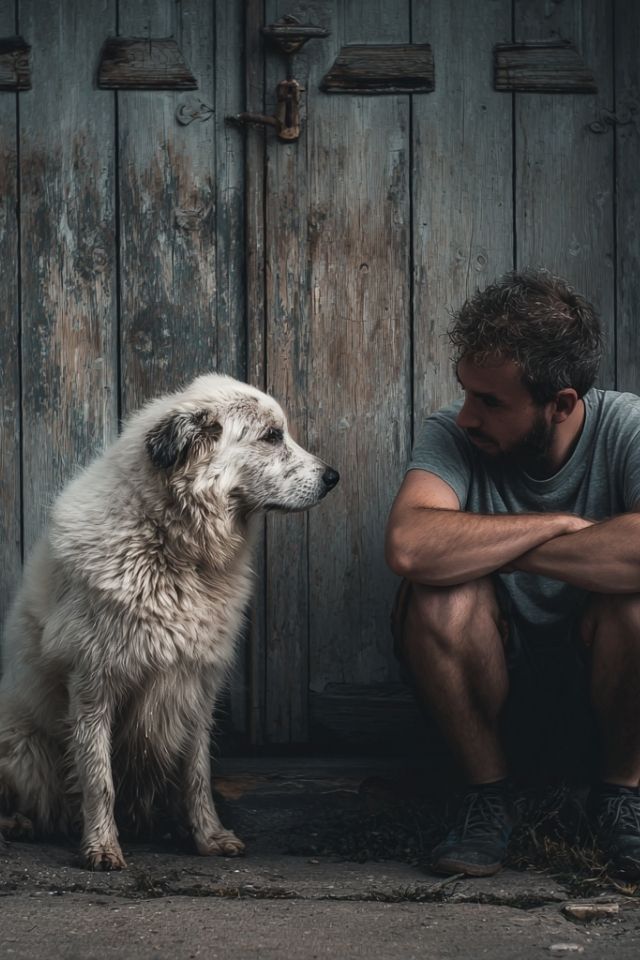The Silent Witness
There’s a particular stillness that falls over a dog when tension enters a room. You’ve likely seen it—that moment when your companion, mid-play or mid-rest, suddenly becomes very small, very watchful. Their ears shift backward, not in aggression but in a kind of listening that goes deeper than sound. They’re reading the room the way ancient mariners read the sky before a storm.
Your dog doesn’t need to parse the words of your argument. They won’t remember whether you fought about finances or schedules or that thing that’s been simmering for weeks. But they will remember how the air changed. How your voice took on edges it doesn’t usually carry. How your partner’s footsteps grew heavier, more deliberate. How the whole house seemed to contract around something unspoken.
This is where our story begins—not with misbehavior or regression, but with witnessing. With a creature whose nervous system evolved for ten thousand years to read ours, now standing in the center of emotional weather they cannot control.
The Invisible Thread Between Hearts
Scientists call it emotional contagion, but that phrase feels too clinical for what actually happens between you and your dog. It’s more like an invisible thread—the same thread that lets them know you’re sad before you’ve shed a tear, that brings them to your side when anxiety rises in your chest. This thread is their gift to you, woven through centuries of coexistence, tightened through every shared sunset and morning walk.
But threads can transmit more than comfort.
Research tells us that dogs mirror human emotional states with particular sensitivity to negative emotions. The longer you’ve lived together, the stronger this mirroring becomes, especially in female dogs. Time, it turns out, doesn’t just build trust—it builds conductivity. Every year together makes your dog more attuned to your inner weather, more responsive to shifts in your emotional atmosphere.
When conflict enters your home, your dog’s body responds before their mind can process it. Cortisol levels shift. The HPA axis—that ancient stress response system—begins its cascade. Their heart rate elevates. Pupils dilate slightly. The world becomes sharper, more dangerous, even though no physical threat exists.
Your dog can even distinguish between a mild disagreement and a true emotional storm. They know the difference between tension and devastation the way you know the difference between wind and hurricane. Their freeze response—that absolute stillness you’ve noticed—tells you they’re not just hearing raised voices. They’re experiencing them, absorbing them, carrying them in their bodies long after silence returns. 🧠
When Memory Fractures
Here’s something that mystifies many dog owners: a perfectly trained dog suddenly acts as though they’ve never heard “come” or “stay” in their lives. Commands that were once reliable dissolve like morning mist. House manners deteriorate. Recall becomes inconsistent. It feels like betrayal, or laziness, or stubbornness.
It’s none of these things.
What you’re watching is a nervous system prioritizing survival over sophistication. When your dog’s world becomes unpredictable—when the people who define their universe start emanating stress and conflict—their brain makes an ancient choice. It redirects resources away from complex learned behaviors and toward threat monitoring. The neural pathways that support a perfect “stay” become less accessible when stress hormones flood the system.
Think of it like trying to remember a phone number while someone’s shouting nearby. The information hasn’t disappeared from your mind, but accessing it becomes exponentially harder.
Research shows us that dogs in learning-conducive states carry themselves in specific ways: wide eyes of engagement, closed mouths of focus, ears erect with attention, tails forward and high with confidence. These aren’t just postures—they’re the physical manifestation of a mind ready to receive and respond. Family conflict dismantles these states, leaving your dog struggling to access training that exists perfectly intact in calmer moments.
The regression happens through three quiet mechanisms:
Focus splinters under the weight of ambient stress. Your dog can’t concentrate on your cue when their system is scanning for emotional danger.
Associations break when the emotional context of a command shifts. Your “settle” cue, usually delivered in warmth, arrives now wrapped in tension. To your dog, these might as well be different words entirely.
Communication confuses when tone and body language become unreliable. The sharp “come” called out in frustration bears no resemblance to the cheerful “come” of peaceful days. Your dog isn’t refusing—they’re genuinely uncertain what you’re asking. 🐾
The Landscape of the Limbic
Let’s go deeper, into the geography of your dog’s inner world. The hypothalamic-pituitary-adrenal axis sounds like something from a medical textbook, but think of it instead as a river system. When functioning well, it flows in natural rhythms—rising to meet challenge, falling back to calm. But chronic stress—the kind that comes from prolonged household tension—can alter this river’s course permanently.
Epigenetic changes occur, particularly in the genes that regulate stress hormones. It’s as though the riverbed itself changes shape, making future floods more likely, recovery more difficult. Your dog’s brain becomes hypersensitized to conflict cues, triggering intense responses to even minor household friction. A limbic system repeatedly exposed to emotional volatility learns to expect volatility, to prepare for it, to never fully rest.
And then there’s oxytocin—that molecule poets might call “the chemistry of belonging.” In peaceful moments, when you and your dog gaze at each other or engage in gentle play, oxytocin rises in both your bodies simultaneously. It’s the biochemical signature of bond, of trust, of being seen and safe.
Household conflict disrupts this delicate system. The very hormones that should strengthen your connection become dysregulated. Dogs who experience chronic stress show altered oxytocin receptor expression, and with it, shifted attachment patterns. The foundation of your relationship—that sense of being each other’s safe harbor—begins to crack.
What we’re describing isn’t just behavioral inconvenience. It’s a rewiring of your dog’s neurological landscape, changes that can echo through their entire life if left unaddressed. 🧡
When the Secure Base Shatters
In attachment theory, there’s a concept called the “secure base”—the person or place from which you can safely explore the world, knowing you can always return to safety. For your dog, you are this base. You are the North Star, the fixed point in a turning world.
Family conflict doesn’t just stress your dog. It destabilizes their entire orienting system.
Some dogs respond by developing anxious attachment—clinging desperately to you, following from room to room, unable to settle even when you’re present. They’re trying to keep the secure base in sight at all times, terrified that if they look away, you might disappear or change. Others develop avoidant attachment, withdrawing emotionally, spending more time alone, greeting you with less enthusiasm. This isn’t coldness. It’s protection—a way of reducing vulnerability in a world that has become unpredictable.
Both responses speak to the same truth: your dog’s sense of safety has been compromised.
Research on shelter dogs offers us a map back to security. It reveals that “mere patience and time spent in a family instead of the shelter environment can be a solution to at least some of the behavioral problems encountered.” This simple finding holds profound implications. It suggests that consistent presence, predictable routines, and patient reconnection can restore what conflict fractured.
This is the work of relational repair—not training in the conventional sense, but a rebuilding of trust, a restoration of emotional synchrony. It’s what we might call Soul Recall: calling your dog back not to your side, but to a sense of safety in your presence. 😊
The Ripple Through the Pack
If you share your home with multiple dogs, emotional contagion multiplies. Dogs exhibit emotional state-matching, particularly around negative emotions. When one dog absorbs household stress, others often mirror that anxiety, creating cascades of collective unease that exceed what any individual might experience alone.
You might notice your dogs pacing in synchronized patterns, hiding together, or exhibiting increased conflict among themselves. The invisible threads connecting them to you also connect them to each other, transmitting distress through the pack like tremors through bedrock.
And there’s usually one person in every household who serves as the primary anchor for the dog—the one whose emotional state matters most, whose presence brings the deepest calm. When this anchor figure becomes volatile or withdrawn or emotionally unavailable, the impact on the dog intensifies exponentially. It’s not that other family members don’t matter. It’s that this particular person represents true north, and when north becomes uncertain, the whole navigation system fails.
The Path of Return
So what do we do with this knowledge? How do we protect our dogs during the inevitable storms of human life?
Start small, with the architecture of daily life. Even when everything else feels chaotic, hold steady to your dog’s routines—feeding times, walks, bedtimes. These become islands of predictability in uncertain seas, anchor points your dog can trust when little else feels trustworthy.
When conflict occurs, create buffers where possible. If you know a difficult conversation is coming, arrange for your dog to be out walking, or settled in another room with something engaging. After tension passes, deliberately reconnect—a quiet walk together, some gentle physical affection, a few minutes of focused presence without distraction.
This is the essence of the Invisible Leash concept: maintaining connection not through physical control, but through emotional reliability. Your dog doesn’t need you to be perfect. They need you to be consistent, present, and willing to repair what conflict fractures.
Environmental enrichment offers your dog positive focus outside the family’s emotional dynamics. Co-regulation practices—where you consciously help your dog shift from arousal to calm through your own settled presence—directly address the dysregulation that conflict creates. These aren’t just techniques. They’re offerings of safety, invitations back to balance.
Watch for signals that professional help is needed: sudden aggression, severe separation anxiety, self-harm behaviors, complete withdrawal. These suggest stress has exceeded what environmental management alone can address. The most effective interventions weave together veterinary care, behavioral consultation, and often family counseling—acknowledging that your dog’s wellbeing is inseparable from the household’s emotional climate. 🐾
Coming Home to Each Other
Your dog’s emotional intelligence—their capacity to read and mirror your inner world—represents one of the most extraordinary gifts in the animal kingdom. It’s the reason they know when you need them, why they press close during grief, why their presence alone can regulate your nervous system.
But this gift makes them vulnerable in ways we don’t always acknowledge.
When household conflict becomes chronic, your dog doesn’t just witness it—they embody it. Their behavior changes not from defiance but from dysregulation. Their stress response system recalibrates. Their attachment security wavers. The neural pathways that support training become less accessible. The foundation of trust requires intentional rebuilding.
This isn’t about blame or guilt. It’s about recognition and response.
You didn’t choose for your dog to have a nervous system so intricately attuned to yours, but you can choose how you steward that connection during difficult times. You can maintain routines that offer stability. You can practice emotional availability even when you’re depleted. You can create moments of repair after conflict passes. You can seek help when the weight becomes too much to carry alone.
Your dog’s behavioral changes are communications, not failures. They’re saying: The world feels uncertain. The secure base is shaking. I need help finding my way back to safety.
Listen with compassion. Respond with consistency. Trust that the NeuroBond between you—that profound neurological and emotional synchrony built through years of coexistence—possesses remarkable resilience when given proper support.
During the storms, remember: in your dog’s eyes, you will always be the most important relationship, the primary source of security, the beloved anchor in a turning world. What you do with that knowledge, how you protect that bond even through turbulence, becomes the measure of the relationship’s depth.
The house may hold its breath sometimes, but breathing always returns. And when it does, your dog will be there—waiting, watching, hoping to find you steady again, ready to rebuild what the storm disturbed, faithful as ever to the invisible thread that binds your hearts. 🧡
